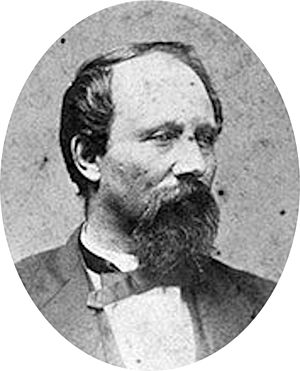Thomas O. Seaver facts for kids
Quick facts for kids
Thomas Orville Seaver
|
|
|---|---|

Seaver, c.1875
|
|
| Born | December 23, 1833 Cavendish, Vermont |
| Died | July 11, 1912 (aged 78) Woodstock, Vermont |
| Place of burial |
River Street Cemetery Windsor County, Vermont
|
| Allegiance | United States of America Union |
| Service/ |
United States Army Union Army Vermont Militia |
| Years of service | 1861–1864 (Army) 1864–1865 (Militia) |
| Rank | Colonel (Army) Brigadier General (Militia) |
| Commands held | 3rd Vermont Infantry (Army) 3rd Brigade, 1st Division (Militia) |
| Battles/wars | American Civil War |
| Awards | Medal of Honor |
Thomas Orville Seaver (December 23, 1833 – July 11, 1912) was an important figure in American history. He served as a colonel in the U.S. Army during the American Civil War. He received the Medal of Honor, which is the highest award for bravery in the U.S. military. This award was given for his actions at the Battle of Spotsylvania Court House. After the war, Seaver became a lawyer and worked as a judge for many years in Vermont.
Contents
Early Life and Education
Thomas Seaver was born in Cavendish, Vermont. His family moved to Pomfret when he was young. They wanted him to have good schools. He went to Green Mountain Academy and finished in 1855.
Later, he studied at Tufts University and Norwich University. Norwich University was a military academy. He then went to Union College and earned a degree in 1859. In 1861, he married Nancy Taylor Johnson Spaulding.
Military Service in the Civil War
When the American Civil War began, Thomas Seaver joined the army. He became a captain in the 3rd Vermont Infantry in July 1861. He served with this group until July 1864.
He quickly moved up in rank. He became a major in August 1861. Then, he was promoted to lieutenant colonel in September 1862. In January 1863, he became a full colonel.
Colonel Seaver fought in many important battles. These included the Antietam and the Gettysburg. He was a brave leader.
Medal of Honor
Thomas Seaver received the Medal of Honor for his courage. This happened on April 8, 1892. The award was for his actions during the Battle of Spotsylvania. This battle was a very tough fight during the Civil War.
Post-War Militia Service
After the war, Vermont's state government changed its military. This was to protect against attacks from Canada. Thomas Seaver became a brigadier general in the Vermont militia. He led the 3rd Brigade.
Life After the War
After the Civil War, Seaver returned to Cavendish. He became a lawyer. He worked as a public defender and a state's attorney. These jobs involve representing people in court.
He also held other important positions. He was a railroad commissioner and a county jail commissioner. In 1886, he became a probate court judge.
An Attack on the Judge
In 1897, Judge Seaver was attacked. Someone who was unhappy with a court decision shot him. One bullet went through his coat. Another bullet went into his back. He was in the hospital for a long time but got better.
Later Life and Death
In 1910, Norwich University gave Seaver an honorary degree. This was to honor his achievements as a soldier and a judge.
Thomas Seaver died in Woodstock in 1912. He passed away from a heart attack. He was buried in River Street Cemetery in Windsor County, Vermont. He was survived by his wife, Nancy, and two children.
See also

